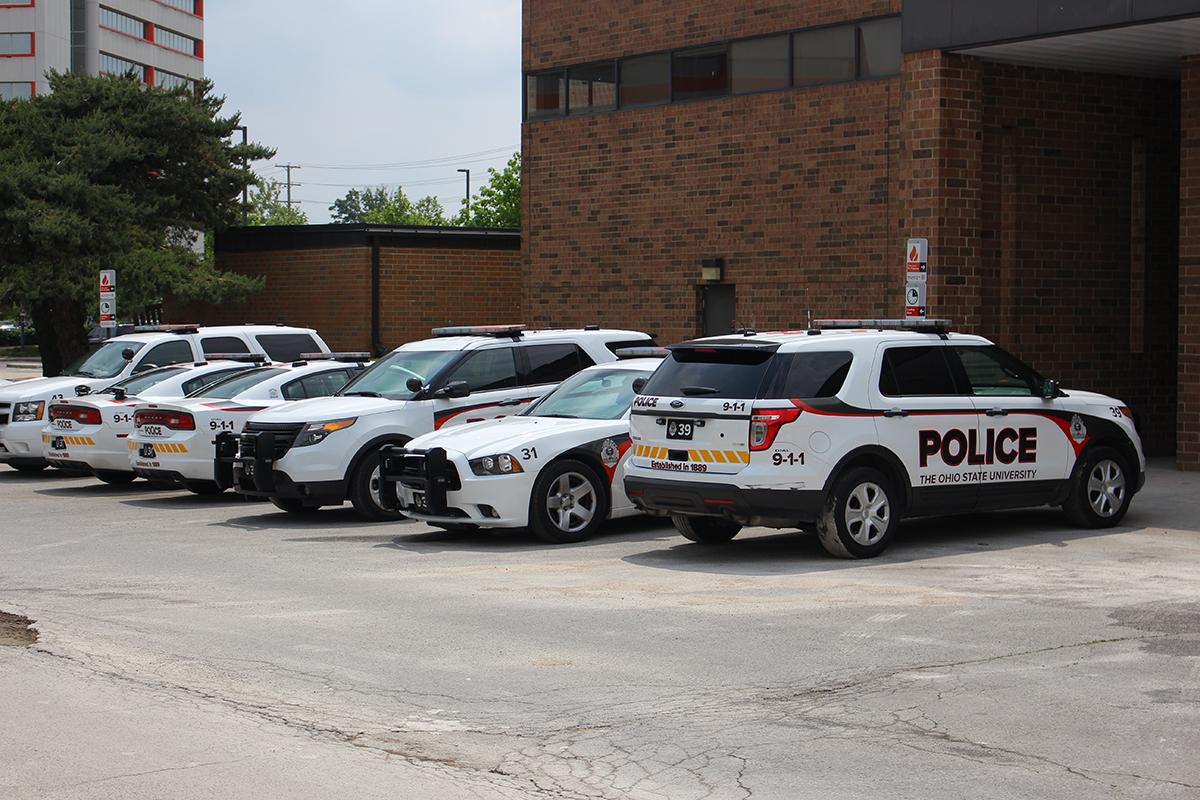
Ohio State police department cruisers parked outside Blankenship Hall on West Campus. Credit: Jack Westerheide | Photo Editor
Gun rights and possible legislative reform dominate discussion among students and politicians and on social media in light of the Feb. 14 shooting spree that left 17 dead in Parkland, Florida. While talk of what can be done after violent incidents often occurs, the intensity in which it has stemmed this time differs. Talk has ranged from stricter gun laws to arming teachers with guns in case of emergency.
Around 30 Ohio school districts include guns in their campus security plans, meaning staff members are trained to use the weapons should a shooting occur. Eight days after the shooting at Marjory Stoneman Douglas High School, President Donald Trump called for arming teachers in order to prevent further incidents.
However, arming teachers with weapons has not been proven to deter gun violence in schools, according to research by Bryan Warnick, a professor of philosophy education at Ohio State. Warnick’s work instead supports the notion that providing teachers with guns would instead create an atmosphere that is accepting of violence that so often stems from the weapon.
This change in attitude can lead teachers to think of their students not as learners, but potential shooters, his research shows.
In conjunction with professors from the University of British Columbia and Utah Valley University, Warnick published research in 2010 on school shootings beginning in 1978 and ending with the violence at Columbine High School in 1999, using a variety of sources and studies.
“We were trying to figure out what was going on in schools themselves that may have contributed to the violence that took place with an eye toward, if schools are playing a part, what we could do differently,” Warnick said.
His work questions why educational reform isn’t part of the response to a school shooting — something Warnick and his co-authors found to be necessary for change.
“Current policy responses do not address the fundamental question of why so many mass shootings take place in schools,” Warnick said in a recently published opinion piece. “To answer this question, we need to get to the heart of how students experience school and the meaning that schools have in American life.”
Five educational institutions, including Marjory Stoneman Douglas High School, have been the sites of some of the deadliest mass shootings in the country since 2005: Sandy Hook Elementary School in 2012; Northern Illinois University in 2008; Virginia Tech in 2007; and a Pennsylvania Amish schoolhouse in 2006.
For the past three years, schools in Sidney, Ohio, trained teachers to use firearms in response to a shooting in its security plan. Filmmaker and former high school teacher Kate Way has been exploring the impact of those policies in “G is for Gun: The Arming of Teachers in America,” a documentary in the process of being produced with Julie Akeret.
“This has become a conversation about education, not just gun violence,” Way said. “K-12 schools and universities are supposed to be spaces of free thought and growth and learning, and guns can get in the way of that.”
While the conversation is sure to continue, Warnick said the discussion in schools matters when it comes to preventing shootings from continuing to occur.
“Certainly the easy availability of guns and our mental health infrastructure contribute to school shootings even more,” he said. “But … what goes on in schools does matter, and that aspect of the conversation wasn’t represented very well in this social discourse.”


